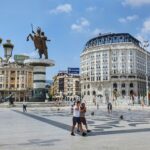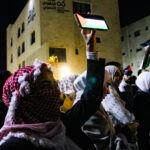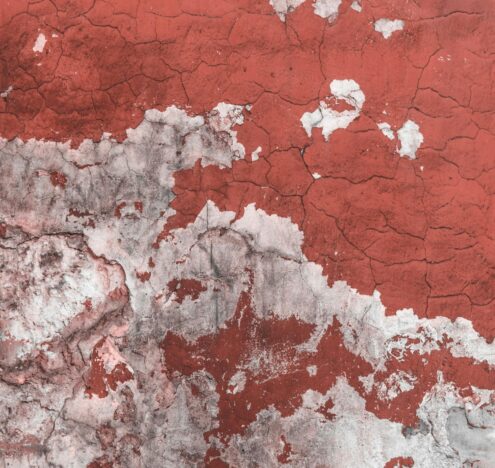In 2010, Qatar became the first Middle Eastern country awarded the rights to host the 2022 World Cup. The winning bid drew global criticism over corruption, as well as the brutal treatment of migrant workers in the country. While several reports by international human rights organizations testify to the country’s human rights abuses, the selective focus on Qatar shifts attention away from the track record of the Fédération Internationale de Football Association (FIFA) when it comes to turning a blind eye to these types of violations.
Much less scrutiny was paid to the 2014 World Cup which was hosted in Brazil, for example, where favelas and villages were cleared to pave the way for stadium construction. A 2011 report on World Cup urban planning in Brazil describes the clearing of large swathes of land as “strategies of war and persecution, such as painting houses without permission, entering homes without judicial authority, misappropriating and destroying personal property, using verbal violence against residents, threatening integrity and family rights, cutting public services, and demolishing and abandoning the ruins of one in every three houses so that neighboring homes overlook scenes of terror.”
Yet Brazil and Qatar are just recent examples that illustrate how FIFA has routinely turned a blind eye to human rights violations. The 1960s and 1970s in Latin America were turbulent years in which US interference to prop up right-wing dictatorships culminated in the region-wide surveillance and annihilation plan known as Operation Condor, which was founded in Chile in 1975. Between 60,000 and 80,000 civilians were killed in the region-wide purge, which also formed part of the US Cold War strategy.
FIFA had embarked upon a new marketing strategy through Joao Havelange in 1974, who brought multinational companies together for sponsorship. Havelange was also known for his links to Latin American military dictatorships, notably Brazil and Argentina, thus directly implicating FIFA’s enabling regimes to cover up their crimes through football. Hence FIFA feigned oblivion in Chile and Argentina, where Pinochet and Jorge Rafael Videla exploited football while purging their countries of socialist and communist influence.
Recollections of the dictatorship years, however, exist to counter FIFA’s selective process of forgetting its role in sports-washing Latin American dictatorships.
A WORLD CUP QUALIFIER MATCH IN A CHILEAN TORTURE CENTER
From 1973 until 1990, the Pinochet dictatorship made use of over 1,200 detention, torture and extermination centers. In the early aftermath of the coup, football stadiums were used as preliminary detention centers. Chile’s Estadio Nacional in the capital city of Santiago was one venue that operated as a detention and torture center until 1974. In 1973, when the Pinochet dictatorship took power through a military coup, 20,000 Chileans were being detained and tortured in the Estadio Nacional. The stadium was still being used by the dictatorship in November 1973, when FIFA authorized a playoff between Chile and the Soviet Union as part of the World Cup qualifiers.
“While the goals are shouted, the screams of the tortured and the murdered are extinguished.”
The Soviet Union refused to play in Chile on account of the dictatorship and its actions, prompting football officials to declare, as quoted by the Washington Post, “Soviet sportsmen for moral considerations cannot at present play at the Santiago stadium stained with the blood of Chilean patriots.” FIFA remained unperturbed, not only by the Soviet refusal and the team’s insistence to play the match on neutral territory. “We are not concerned with politics or what regimes are ruling a country… If the Russians refuse to play Chile, then they are out of the World Cup.”
With the stadium suddenly in the international spotlight, the dictatorship invited FIFA officials to inspect the premises. No detainees were visible. However, former Chilean detainee Jorge Montealegre, who was 19 years old at the time, recounts how all the Estadio Nacional detainees were held in locker rooms and tunnels away from public view, while the dictatorship set about transferring the prisoners to the Atacama desert.
Chile’s national team turned up on the day of the match and scored a goal in the absence of their opponents. A former Chilean national team footballer, Carlos Caszely, described the team’s appearance as “the most ridiculous thing in history. It was a worldwide embarrassment.”
JUBILATION AGAINST A BACKDROP OF ARGENTINIAN EXTERMINATION CENTRES
In 1975, the US turned its attention to Argentina, backing plans for a military coup against President Isabel Peron, the wife of the late and former President Juan Peron. On March 24, 1976, the plan was orchestrated under the dictatorship of Jorge Rafael Videla, and until 1981—two years before democracy was restored to Argentina—over 30,000 Argentinians were killed and disappeared.
Declassified documents show that former US Secretary of State Henry Kissinger, also responsible for the planning of Chile’s military coup, advised Argentinian Foreign Minister Admiral Cesar Augusto Guzzetti at the time, “If there are things that have to be done, you should do them quickly. But you should get back quickly to normal procedures.” The Argentinian dictatorship was much in awe of Pinochet’s methods, particularly the death flights, which Videla applied to facilitate the disappearance of thousands of detainees. Kissinger was briefed on the Argentinian fascination with Chile’s dictatorship by US top aide on Latin America Harry Shlaudeman, “Their [the Argentinian dictatorship] theory is that they can use the Chilean method.
In 1978, Argentina hosted the World Cup. For Videla, it presented an opportunity to portray a purportedly dignified front to the dictatorship. Yet the football stadiums where the world cup matches were played, located in Buenos Aires, Santa Fe, Cordoba, and Mendoza, were in the midst of Argentina’s main detention, torture and extermination centers.
El Monumental, the 1978 World Cup’s main venue in Buenos Aires, was only a few blocks away from the Higher School of Mechanics of the Navy (ESMA). Approximately 5,000 detainees were tortured, killed, and disappeared from ESMA, many of them disposed of through the death flights, where they were drugged and dropped into the ocean to drown.
Another notable example was the construction of the Estadio Cordoba, located close to the detention and extermination center known as La Perla. For the military to continue presenting a good image, a highway was built connecting the locations of Cordoba and Calos Paz, partly on expropriated private terrain. La Perla was used as a detention and extermination center from 1976 until 1979, during which between 2,200 and 2,500 people were detained and killed—most of them disappeared. A witness described La Perla saying: “Everything was structured in that place so that kidnapped people could enter to be killed or disappeared, to create terror in society or simply to destroy. It was an industry of death conceived by an anti-human mind.”
Estela de Carlotto, the President of the non-governmental organization Abuelas Plaza de Mayo, described the 1978 World Cup in terms of football frenzy and oblivion. “While the goals are shouted, the screams of the tortured and the murdered are extinguished.”
To further shift attention away from the dictatorship’s reality, Videla also struck a deal with his Peruvian dictatorship counterpart Francisco Morales Bermudez to ensure a spectacular victory for Argentina to avoid elimination. To seal the deal, Videla agreed to imprison 13 Peruvian political dissidents, who suffered a similar fate in terms of torture as Argentinians opposing Videla.
FIFA’S COMPLICITY IN HUMAN RIGHTS VIOLATIONS
For all that FIFA claimed it was merely concerned with football, not politics, the 1970s in Latin America were characterized by Operation Condor against the backdrop of the Cold War. While declassified documents decades later shed light on the US-backed dictatorship atrocities in the region, FIFA’s involvement through feigning disinterest or oblivion is part of Operation Condor’s history, as well as the wider impact of the Cold War.
Kissinger was Videla’s guest of honor in the 1978 World Cup, attending matches in the company of members of the Argentinian military junta and spreading propaganda that ran contrary to international reports. “The country I found is not the one advertised by the international press. Its situation is grossly misunderstood in Europe and the United States … The World Cup has projected an excellent image of Argentina towards the world.”
Havelange endorsed the 1978 World Cup in Argentina, exposing his ties to military dictatorships for profit. He is also credited with putting military officials in major football positions, such as appointing army captain Claudio Coutinho as the Brazilian national team’s coach in 1978.
With Havelange at the helm, the World Cup was catapulted onto the world stage as a major tournament laden with sponsors and allegiances. Havelange was forthright in his approval when Argentina ratified the organization of the tournament. “Argentina is now more suited than ever to host the tournament,” he declared. In 1976, the Videla dictatorship created the organizing committee Ente Autarquico Mundial 78 (EAM78), which worked together with Coca-Cola to give a false impression of Argentinian euphoria over the World Cup and gloss over the fact that the dictatorship was detaining, torturing and killing its opponents. In his inaugural speech of the World Cup, Videla exploited the concept of peace, even as the military was busy torturing and killing people in the vicinity of the stadiums.
It was only in 2017 that FIFA adopted a human rights policy, which it still fails to uphold. If FIFA normalized dictatorships in the 1970s, it is only consistent that it normalizes exploitation and human rights violations today. These violations become selectively visible when the media decides to ramp up its criticism of one country and not another, turning a blind eye to the consistently problematic behavior of the organizer of the World Cup. FIFA is following the legacy it created, against a backdrop where human rights are destined to remain embellishments on paper.
Ramona Wadi is a freelance journalist and book reviewer writing about Palestine and Latin America, with a focus on Chile and Cuba.





















